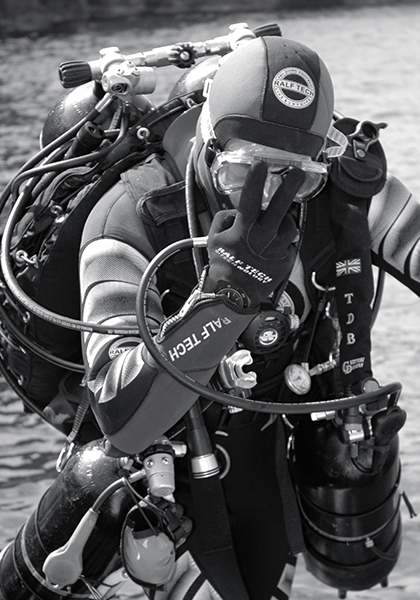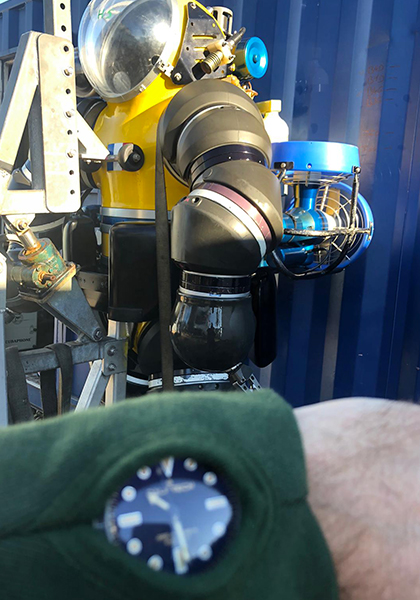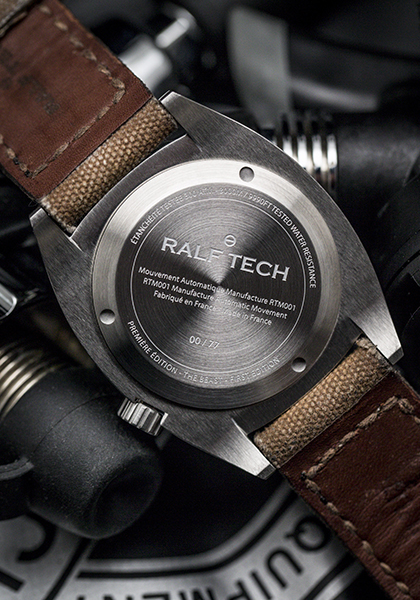It’s guaranteed watertight down to 3,000 metres, tested to 4,000 m, with a price tag under CHF 10,000. And it comes with the first 100% French movement manufactured by Péquignet, entirely designed and built with components produced in France (with the exception of the balance spring). This new monster of the deep, certified as a dive watch according to ISO certification 6425, is unlike anything else you might have seen before. RALF TECH CEO Frank Huyghe, speaking exclusively to WorldTempus, explained the saga of its gestation (it took 3 years, like a whale), which involved a rigorous design process and exhaustive testing.
“We launched the project in February 2019 with the ambition of creating a watch capable of going as deep as possible. The world’s oceans have an average depth of 3600 m, and we wanted to go that far and even further. And we didn’t want to create a prototype; we wanted it to be part of our regular production, with a price less than CHF 10,000,” Frank Huyghe explains. As you have probably gathered, watches that beat world records tend to be prototypes, such as the Omega Planet Ocean (10,928 m) and the Rolex Deep Sea Challenge (10,898 m). If we look at commercially produced watches, there’s the Omega Ultra Deep (water resistant to 6,000 m, CHF 11,200) and the Rolex Deep Sea (water resistant to 3,900 m, CHF 13,500). So, what do you have to do to make a watch that can withstand the incredible pressures of the ocean depths?

1st line of research: shape
“We developed a new shape for the glass, which has a major impact on watch performance. A domed profile distributes the pressure across the entirety of the glass rather than focusing it in the centre. The challenge was to find the perfect profile. We also worked on the hydrostatic properties of the ‘trailing edge’ of the bezel, to be sure that the shape shed water efficiently and continued to distribute pressure uniformly.”

2nd line of research: the caseback
Like the dial crystal, the more domed the back of the case is, the better it can withstand pressure. “We opted for a compromise between the ideal shape to pass tests, when the watch is not worn on a wrist as it would be in real life, but is subjected to pressure from every side – and reality, given that a watch with a domed back would be impossible to wear on the wrist!” “The Beast” therefore comes with a back that is curved at the edges and flat in the centre, comprising 8 mm of steel (only 3 mm of which are visible on the outside), which ensures that it will not deform under pressure. RALF TECH has also incorporated an internal encapsulation mechanism that employs a series of compartments to distribute pressure.

Real-life test conditions
To pass the water test, RALF TECH entrusted its beast of a timepiece to the French navy, who took it down to a depth of 2,500 metres. In order to add an additional vertical kilometre, RALF TECH brought in Triton, a private company whose submarines have set the most extreme records. The Beast travelled down… and down… and down… first to 3,000 m, then 3,500 m, almost to 4,000 m. “We used the same prototype every time. Because it handled everything perfectly there was no reason to change,” Frank Huyghe points out. “This new dive watch will have a guaranteed depth rating of 3,000 m, although it has handled more. That means we retain some room for manoeuvre for future models. With a series-produced watch, we could envisage getting to 5,000 metres. Beyond that, we’d be in the realm of concept watches, which are not designed to be worn.” We’re looking forward to seeing the full range of “The Beast” watches in December.







